|
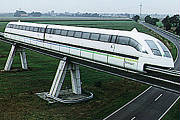
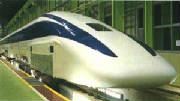
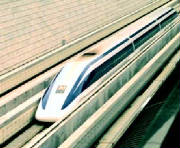
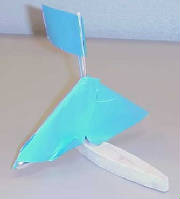
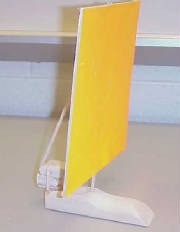
|
An Introduction to Magnetic Levitation:
Magnetic Levitation (mg´lev) or maglev, support and propulsion of objects or
vehicles by the use of magnets. The magnets provide support without contact or friction, allowing for fast, quiet operation.
In a typical system, the vehicle, which resembles a railroad car, travels above a guideway. Arrays of magnets of like polarity
in both the vehicle and guideway repel each other, producing the lifting force. By continuously changing the polarity in alternate
magnets, a series of magnetic attractions and repulsions is created that moves the vehicle along the track. The electrical
energy required for such a system is great and the use of superconducting materials offers the only realistic potential for
this means of transportation. Research into such systems has been conducted since the 1960s in the United States,
Great Britain, Japan,
and Germany. Maglev technology was applied in England
in the construction of a fully automated, low-speed shuttle in Birmingham, but
the line was closed because of maintenance problems. In 1996 funding was approved in Germany
for a maglev train linking Berlin and Hamburg,
but it was canceled in 2000. In 2002 a maglev line linking Shanghai's financial district with its new airport was opened,
with scheduled operation projected for 2004; called the Translev, it can reach speeds of 267 mph (460 kph) along its 18.6
mi (30 km) route..
Required Internet Reading:
http://techedlamotte.tripod.com
Click on Magnetic Levitation Vehicle Links:
Websites to read and
review:
How a maglev train works
http://travel.howstuffworks.com/maglev-train.htm
How an electro magnet works
http://science.howstuffworks.com/electromagnet.htm
How a magnet works
http://science.howstuffworks.com/electromagnet1.htm
Details on the electro magnet, Basic Design principles
http://science.howstuffworks.com/electromagnet2.htm
Trains Reach High Speeds With Magnets
http://www.techtv.com/news/print/0,23102,3370193,00.html
Company researching and building maglev trains
http://www.transrapid.de/en/index.html
Overview of Maglev Research and Development
http://www.rtri.or.jp/rd/maglev/html/english/maglev_frame_E.html
|
|

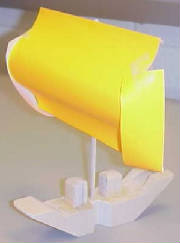



|
Magnetic Levitation Project Overview:
- It is your task to design
a Maglev Vehicle that will move the 8 the length of the maglev track.
- Created a detailed design
report for your vehicle.
- Include all research
- Define the listed keywords.
(You can find the answers in the required reading.)
- Answer the review questions.
(You can find the answers in the required reading.)
- Sketch out four different
designs for your vehicle. (Front View, Top View, Right Side view)
- Create a detailed drawing
of your vehicles designs. (Front View, Top View, Right Side view, Include dimensions)
- Construct your maglev vehicle.
- Test Maglev Vehicle
Define the following Keywords:
- Maglev
- Electromagnets
- Magnets
- Permanent Magnets
- Temporary Magnets
- Battery
- Electrons
- Steel
- Wire
- Compass
- Coil
- Magnetic Field
- Guide way
- Levitate
- EMS
electromagnetic suspension
- EDS Electro dynamic suspension
- MPH
- KPH
Review Questions:
- What countries are leaders
in developing Maglev technology?
- What is the fundamental law
of Magnets?
- What is the top speed of a
maglev train?
- What are the principles of
Maglev?
- What are the 3 components
of a Maglev system?
- What are the advantages of
using a Maglev system?
- What are the disadvantages
of using a Maglev system?
|